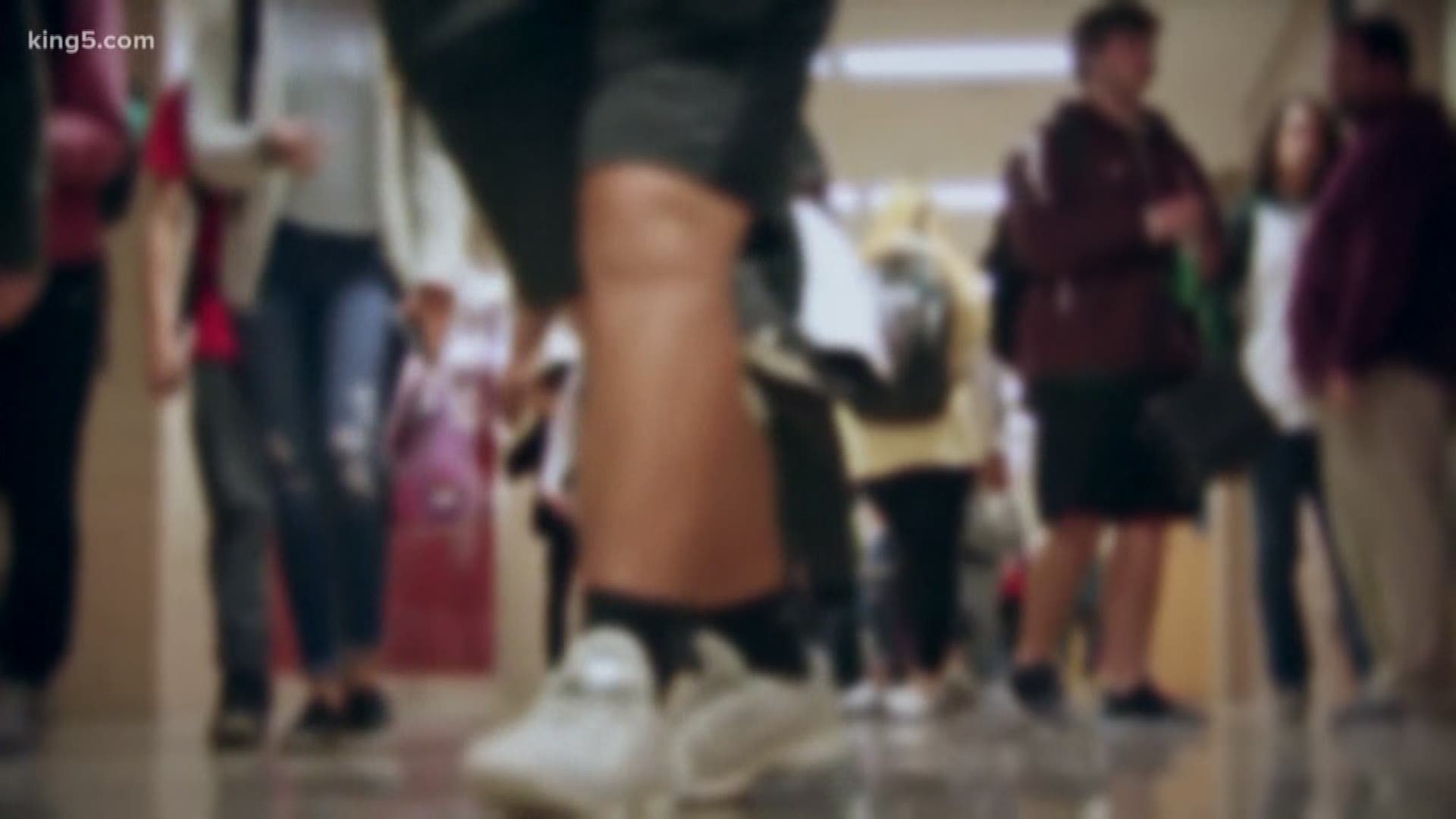Editor's note: The above video is from a May 2019 story regarding mental health awareness in youth.
Stress and mental health issues are on the rise for American teens, but one University of Washington researcher said learning about mindfulness through art therapy could help.
Dr. Elin Björling, a Research Scientist in the Human Centered Design and Engineering Department at UW, found that teen girls who suffered from stress-related headaches saw a reduction of stress and headaches after participating in six 50-minute sessions of art therapy.
Rates of major depressive episodes among children ages 12-17 have increased by 53% between 2005 and 2017, according to experts.
Other research suggests that rising rates of depression and suicide in teens affects girls much more than boys. That research also finds a correlation between depression and increased screen time.
“Every teen has the issue of stress. Girls with headaches have another layer on top of that, something interrupting their work, which creates more stress. So they’re a particularly vulnerable population and one that deserves attention. Girls have told me they don’t seek care, they just kind of accept that that’s their experience," Björling explained.
The study involved eight teen girls who all reported experiencing stress-related headaches.
Mindfulness has grown in popularity as a way to cope with stress, but Björling explains that meditation isn’t for everyone, and mindfulness for teens needs to look different than mindfulness for adults—that’s where the art comes in.
Since school is one of the primary sources of stress, Björling wanted to design a school-based intervention. School-based activities also provide more equitable access to mental health services.
A major facet of the study was that it provided options for activities that the students could choose from, giving them some control and choice over what they would do.
“For it to be effective at school, it needs to not feel like school. We created a structured approach, but with a lot of unstructured parts where they could weigh in about what they liked and didn’t like, what they wanted to do next," Björling explained.
One teen who participated in the study described the positive effects: “I felt like I could handle whatever happened in my next class; whatever assignments I got or whatever. I could be like, I have techniques I can use to calm down and just focus more.”
The study is just the first step—since there were only 8 participants, the results can’t be generalized to larger populations.
“It’s promising and I’m excited that people are doing this research,” said Dr. Christopher Willard, a Psychologist and Teaching Associate at Harvard Medical School who was not involved with the research. “Stress makes everything worse, if you have physical or mental health issues, stress will make them worse.”
Some local schools have taken note of increasing stress levels for teens and have sought to include mindfulness in their curriculum with the hope that it might help.
Ann Hollar, who has taught mindfulness classes to teens at the Center for Child and Family Wellbeing at UW, has worked with several local high schools on schoolwide
She has trained teachers at Washington high schools in a curriculum that covered topics like how to focus on breath, finding gratitude, and observing your own feelings and thoughts.
Hollar reported that Roosevelt High School in Seattle saw some improvements on their climate surveys, with students reporting better emotional regulation. She had the best experiences when she collaborated with student groups to create lessons around themes relevant to them, like collaborating with the Black Student Union to create a lesson about microaggressions.
Hollar said more research is needed to understand how technology affects mental health, but she definitely sees an impact. “You see the constant distraction—the ability to maintain focused awareness on anything has definitely decreased. It affects academic performance, which also increases anxiety.”
Björling would like more schools to consider ways to support better mental health for their students. “I’m surprised that a lot of schools aren’t taking stress seriously, it’s on the rise in almost epidemic proportions. If we don’t have mental health, nothing else matters," she said.


